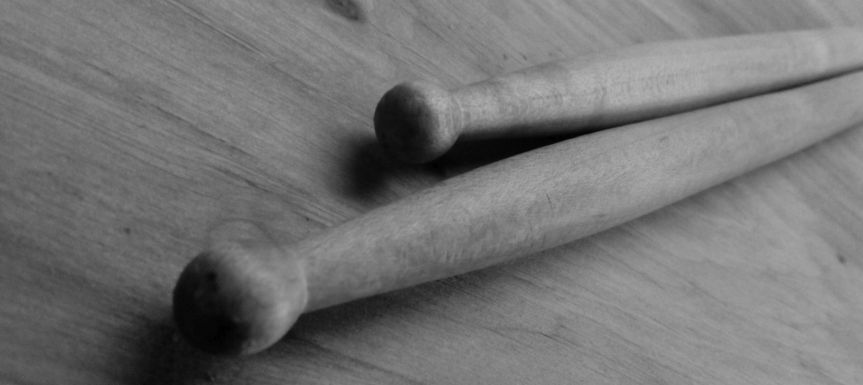 WHAT’S THE DIFFERENCE between writing and music? Writing takes and music gives.
WHAT’S THE DIFFERENCE between writing and music? Writing takes and music gives.
Writing is like an old-fashioned bloodletting, I think. Writers spill their blood all over the pages. This is why writers need to take breaks. One can only spill so much per day. If you give too much, you will feel dry and tired. Squeezed like a lemon. It takes a while to recover until you are ready to give again. Good writers take time to restore their energy. Many take long walks to mull things over in their minds. Then they return to the keyboard to bleed some more, to squeeze out more juice.
Music is the opposite. If you perform for people, the energy that you give off returns. This is why bands can tour for months. The music actually gives musicians energy. The songs only get better.
When I was a teenager I knew this. I had just acquired a bass guitar, which was an instrument that fit perfectly for me and my hands. The complex chords of the guitar were almost painful to construct, and the drums were a chaotic landscape of cymbals and tom-toms, but the bass was heavy. I loved to reach for a low F, at the very end of the neck. It felt as if I was reaching into the watery depths to hit that dark note, which didn’t resound as much as it throbbed and vibrated.
At that time, I would play along with a live album by James Brown that had been recorded at the Apollo Theatre in New York in June 1967. At that time, his music was changing from its earlier classic soul style to the funk of his later records. There was one stretch where James Brown led the band through a medley of tunes before breaking into one of his better known songs of the times, “Cold Sweat.” I thought it was the best name for the song, because by that time in the jam, I really would be sweating. There was something otherworldly, almost religious about those rhythms. The way the sweat ran into my eyes. I couldn’t imagine how his band felt on stage on that hot summer night, dressed in their matching suits, swinging through those endless songs.
Sometimes I would even play past midnight. Yet no matter how much I sweat, no matter how hot I got, or how much my fingers hurt, I never felt drained or tired after letting James Brown guide me. Instead I felt even more energized. When “Cold Sweat” finished at last, I was ready to run. My shirt was drenched, but I felt a humid thunderstorm of adrenaline break out all over. I was dripping. This music, soul music, could do that. It might be the deepest spiritual experience I have had to date, and I’ve been to every kind of church, and spent times in cloisters and ashrams.
These days I write mostly, which means I bleed. This is my profession, and my musician friends mostly prefer to see me this way. Besides, they are real musicians. I asked guitarist Andre Maaker if he wanted to be in a band, but he was already booked, and then I asked Silver Sepp if he would be our drummer, but I think he had to fly off to Uzbekistan or Israel for a concert.
“Aren’t you a writer?” one of my musician friends chided me. I am. I bleed the blood, I squeeze the juice. Yet I still have a bass guitar. It’s an acoustic fretless one that I bought on impulse. It makes the deepest, most wonderful sounds. Whenever I tire of what writing takes out of me, I pick up my bass guitar and play, because music never takes, music always gives back.
An Estonian-language version of this column appears in the summer 2018 issue of the magazine Hingele Pai.

 IT WAS JUST A FEW YEARS AGO that a young father went to the store to buy a trampoline. A trampoline! That wonderful round thing that stands in the corner of almost every Estonian yard. I got a big box from the store, went home, and started to put the new attraction together. The neighbor just stared and smiled – fathers and their silly challenges! It’s true the trampoline fell apart a few times, but finally it was ready. The exciting assembly process attracted not only our own children, but the neighbors too.
IT WAS JUST A FEW YEARS AGO that a young father went to the store to buy a trampoline. A trampoline! That wonderful round thing that stands in the corner of almost every Estonian yard. I got a big box from the store, went home, and started to put the new attraction together. The neighbor just stared and smiled – fathers and their silly challenges! It’s true the trampoline fell apart a few times, but finally it was ready. The exciting assembly process attracted not only our own children, but the neighbors too. WE LIVE IN VILJANDI, a small town in the south of Estonia. Certainly, you have heard of this place. We means me, Justin, a writer or journalist, and daughter Anna, who is 10 years old and goes to school, at the moment attending the fourth grade.
WE LIVE IN VILJANDI, a small town in the south of Estonia. Certainly, you have heard of this place. We means me, Justin, a writer or journalist, and daughter Anna, who is 10 years old and goes to school, at the moment attending the fourth grade.